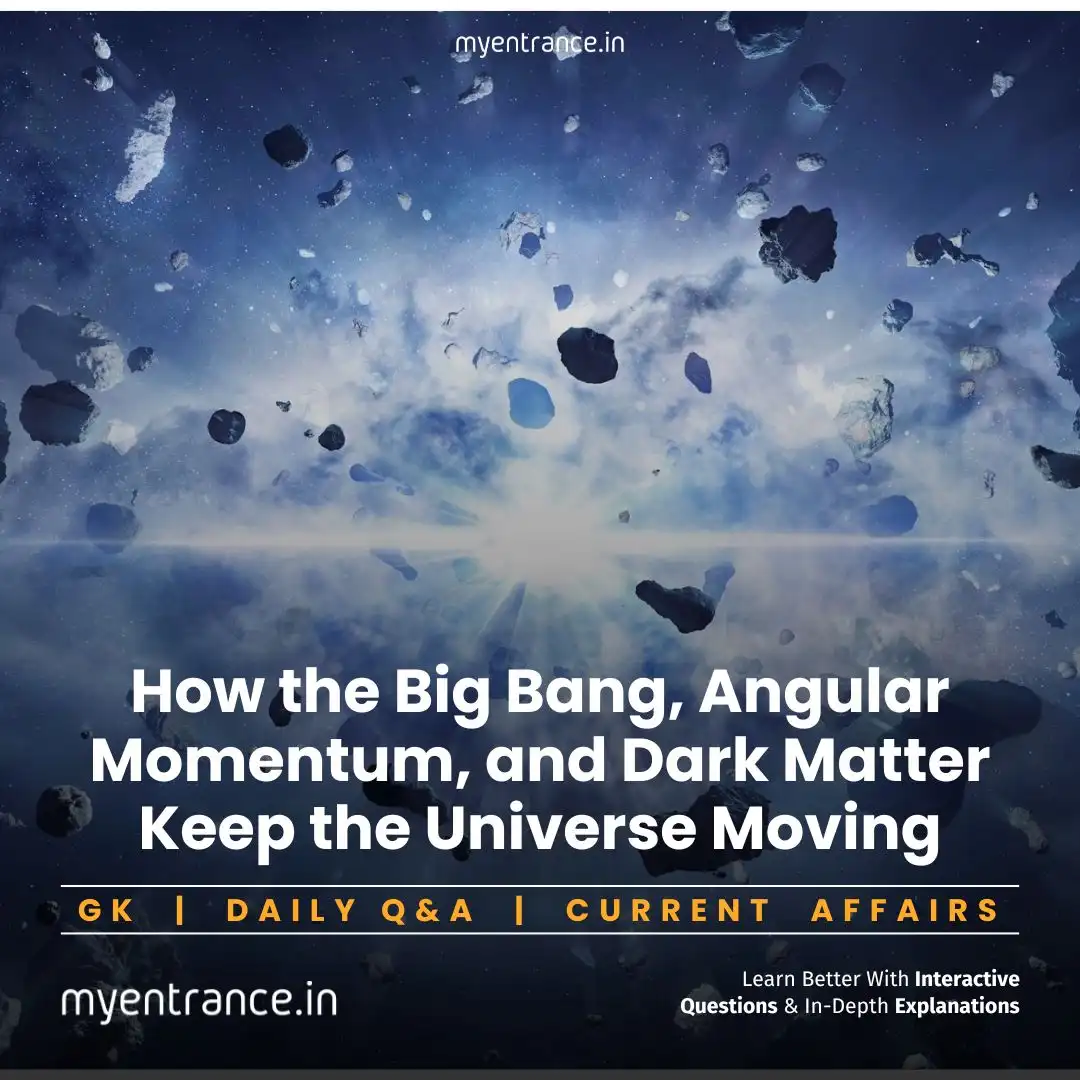Select Language
Why Planets, Stars, and Galaxies Never Stop Moving – A Scientific Breakdown
The universe is in a state of perpetual motion—planets orbit stars, stars revolve around galaxies, and galaxies themselves drift through space. But what keeps this cosmic dance going? The answer lies in three key factors: the Big Bang, angular momentum, and dark matter.

Why This Matters for Exams:
SSC & PSC: Questions on basic astronomy, the Big Bang theory, and forces in space frequently appear in general science sections.
NIFT/NID: Design and innovation exams may include questions on cosmic phenomena for creative thinking assessments.
SSLC & Competitive Exams: Fundamental physics concepts like angular momentum and dark matter are crucial for science-based questions.
1. The Big Bang: The Starting Point of All Motion
According to astrophysicists like Edward Gomez (Las Cumbres Observatory), the universe’s movement traces back to the Big Bang—the colossal explosion that birthed the cosmos. This event didn’t just create matter; it set everything into motion.
The Big Bang caused the rapid expansion of space itself, not just objects moving through it.
Carol Christian (Hubble Space Telescope) explains that movement was “built into the universe from the very beginning.”
Even today, galaxies continue to drift apart due to this initial expansion.
2. Angular Momentum: The Force Behind Orbits and Rotation
Why do planets revolve around stars? Why do galaxies spin? The answer lies in angular momentum—a fundamental principle in physics.
When cosmic objects (like gas clouds) come close, gravity pulls them together.
If they don’t collide, they start orbiting each other due to conservation of angular momentum.
Gomez compares it to spinning pizza dough—the faster it spins, the flatter it becomes, just like how the solar system formed from a spinning disc of gas and dust.
3. Dark Matter: The Invisible Force Shaping Galactic Motion
Galaxies rotate in ways that defy normal physics—stars at the edges move just as fast as those near the center. This anomaly hints at dark matter, an invisible substance that exerts gravitational pull.
Dark matter doesn’t emit light but influences visible matter through gravity.
It makes up 27% of the universe, shaping how galaxies move and cluster.
Without dark matter, galaxies would fly apart due to their own spin speed.
Conclusion: Motion is the Universe’s Fundamental Nature
From the Big Bang’s explosive start to the unseen grip of dark matter, movement is woven into the fabric of the cosmos. As Gomez puts it, “Motion demonstrates that the universe is dynamic.” Understanding these concepts not only deepens our knowledge of space but also prepares students for competitive exams where astronomy and physics play a key role.
Sample Questions & Answers (Exam-Focused)
Q1: What caused the initial motion of the universe?
Ans: The Big Bang initiated the expansion of space, setting all cosmic objects into motion.
Q2: Why do planets orbit stars instead of drifting away?
Ans: Due to angular momentum—gravity pulls them together, while their spin keeps them in orbit.
Q3: What is dark matter’s role in galaxy movement?
Ans: Dark matter’s gravitational pull prevents galaxies from flying apart despite their high rotation speeds.
Q4: How does the Big Bang explain the universe’s expansion?
Ans: The Big Bang didn’t just propel matter outward—it stretched space itself, causing galaxies to move apart.
Q5: Why do stars at the edge of a galaxy move as fast as those near the center?
Ans: This anomaly suggests the presence of dark matter, which adds unseen mass and stabilizes galactic rotation.
Most Predicted Questions
Comprehensive study materials, Expert-guided tips & tricks, Mock tests and instant results.
Start your SSC, NIFT, NID, FDDI, PSC journey today with MyEntrance, your ultimate online coaching platform.















